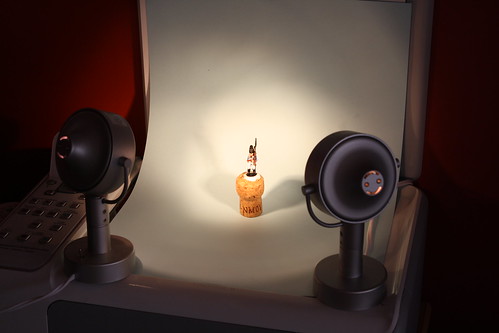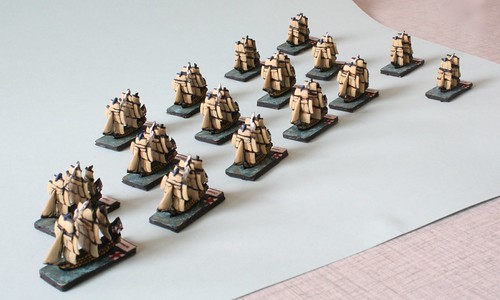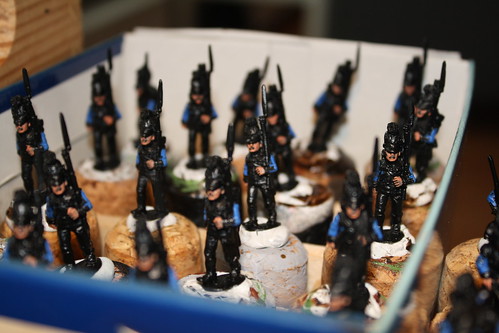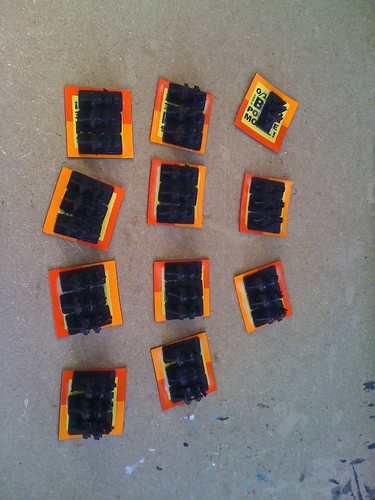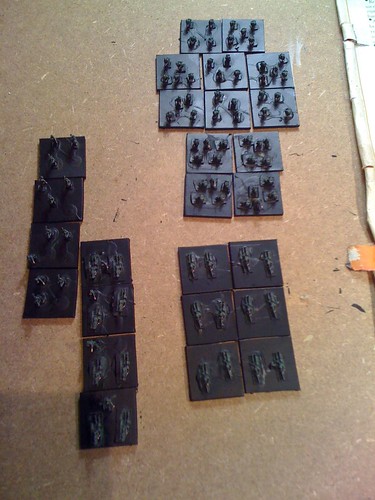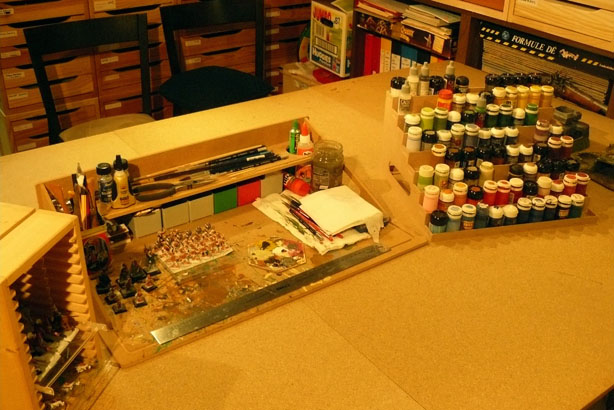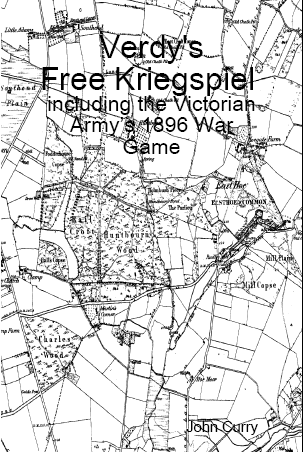Some time ago I bought the [Napoleon rules](http://www.wargamesfoundry.com/books/MATTNAP.asp) by [Wargames Foundry](http://www.wargamesfoundry.com) and have been promising a review of them for quite a while now. This is that review :).
Having previously bought Kevin Dallimore's painting book from them, and having seen some full colour samples on their website, I knew that, at least in terms of amount of 'wargames porn', the book would be worth its fairly steep price of €37.
In that respect, I was not disappointed. The book is well laid out, with full colour pages throughout the book and one or more photos of well painted miniatures on the vast majority of pages. In addition to photographs of just painted miniatures, there are also dozens of photos of (probably posed) games in full swing -- both very inspirational and reassuring to the army painter amongs us as these show figures that have been painted to a much more sensible table top standard. As to sheer visual impression alone, I would even hazard to put forward the opinion that the book is worth its prize (an opinion that, given what is to follow a few paragraphs further down, might be seen as slightly surprising and even contradictory).
One area I particularly liked, a bit contrary to my expectation, is the tutorial section on painting. It shows a figure (a French Old Guard grenadier, arguably the iconic figure of the period) being painted by Kevin Dallimore in full-on three layer style with good close ups showing the 'difficult bits' such as the face. Educating stuff, and in my opinion even better than in his own painting book (that, I felt, was occasionally somewhat lacking in this last respect). Even better, in addition to Mr. Dallimore's tutorial there's also a nice bit by the author himself on his style of army painting. Not that this is much more than 'first do this on twenty figures, than that and after that another thing', but is nevertheless refreshing to see a section on army painting in a general wargames book.
Now to the quality of the ruleset contained in the book. Unencumbered, unphased and even undaunted by my [earlier record](http://www.nirya.be/snv/ttm/archives/000041.html) in [reviewing rulesets unplayed](http://www.nirya.be/snv/ttm/archives/000058.html), I will continue to offer bold statements totally denuded of any practical background and say that the rules as written are unplayable. From the way the rules are written and presented, it would certainly seem that they were never playtested in an environment where the rules author or someone familiar with the rules was not present. While it is easy to explain in person what the idea behind a certain rule is or how to handle a certain situation on the tabletop, it is something else entirely to have to write this down in a way that makes that same intent clear to someone who has only the words as written as a guide, and might even be a complete newcomer to the Napoleonic period or even wargaming in general. I think (though I can never be sure until I play them - they might miraculously turn out to be of the utmost
clarity) that these rules as written fail in that respect.
This is just an impression from two readings of the rules, and I'm not an expert on the Napoleonic period, so I'm willing to be proven wrong on playing these rules, as always.
However, I do have a big issue with the book in an area that I *am* somewhat familiar with - that of painted miniatures, and photographs thereof. The (often half-heartedly finished but nevertheless quite instructive in places) reference section is larded with pictures of large (for contemporary gaming, not the old style big battalion games) units of well painted figures. Of course, Foundry being a miniatures company, they want to sell miniatures, which is a big part of the reason these photographs are in there. And while the reference section sometimes skirts dangerously close to the line between reference and miniatures catalog (or, for some of the belligerents represented, leaves the line dwindling in the distance, well and truly crossed), _in se_ this is fine. They are a miniatures company and get their profit from selling miniatures. Nothing wrong there.
So, when I first browsed through and subsequently read the reference section, I ogled those pictures and admired the effort that must have gone into painting so many figures (an effort that I can now appreciate even better, being in the process of painting Napoleonic Bavarians). And then I looked again. And again. And felt cheated. Every single photo of a unit that I subsequently examined has had copy paste work done. For example, if a unit consists of 6 bases -- one command, 3 fusilier, 1 grenadier and 1 light of flank -- in all of the photographs that I examined (and I'd almost say all of them - though I haven't checked) the similar bases (e.g. the three fusilier companies) are identical to the pixel. _They have been copy pasted in a photo editing program_.
And it gets worse. There are pictures, e.g. the unit of early Austrian "German" infantry on page 159, where even within an individual base, _every single figure is a copy of the same figure_. The photo mentioned has exactly four individual painted figures on it, the remaining 28 are copy paste clones of the same figure.
Now, I might be wrong about this (though I doubt it). The reason I think these are copy paste clones is twofold:
- If you look closely at some of the photos, you can see the cropping artefacts one gets when cropping the background out of a photo
- Every figure on these bases is painted exactly (and I mean _exactly_) the same, with every paint stroke at exactly the same place with exactly the same thicknes and exactly the same hue. Unless these were painted by a machine (and even then) that seems impossible.
So, we have here a company that is so eager to sell its miniatures that it rushes out a rulebook advocating large(ish) units (nothing wrong with that in itself) but subsequently cheating (in my view) their customers by not even bothering to paint (or, more precisely, have painted) these figures themselves. Instead, they paint a few and then copy paste their way to full units. This is not good in my opinion.
Now, while that has not stopped me to buy Foundry miniatures (hey, one has to keep feeding the habit, and they had a sale on) or even to play the rules, it nevertheless is something that leaves a bad taste in my mouth. It's not a capital crime, but it nevertheless is further proof that Foundry has well and truly fallen from its perch as the nec plus ultra of historical 28mm figures.
Feel free to discuss in the comments :)

